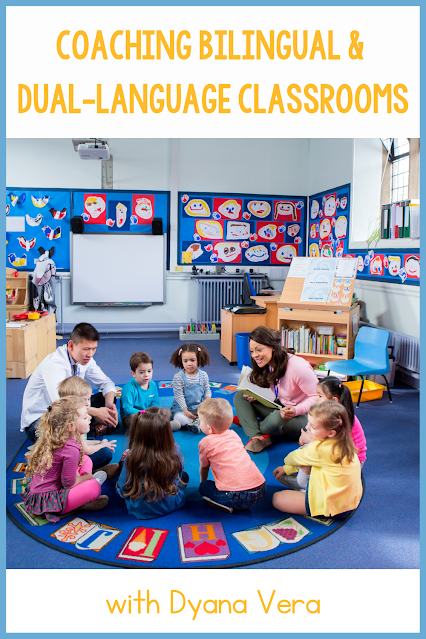What are best practices for coaching bilingual and dual-language classrooms?
On this episode of The Coaching Podcast, I’m joined by Dyana Vera of Biliteracy Now. We talk about the different bilingual models, the goals of bilingual programs, and what you need to know to be an effective dual-language coach.
Bilingual and Dual-Language Classroom Models
There are different models used in bilingual and dual-language classrooms. Some models are better than others, but none are perfect for every student. Also, as new information becomes available best practices evolve and change.
Goals of Bilingual or Dual-Language Programs
During my discussion with Dyana, I asked her about what she thinks makes a high-quality bilingual program. She shares three goals for any program.
- The program is bilingual and bicultural
- The students' first language is preserved and valued
- Students are academically successful
A Common Misconception
The biggest misconception about bilingual education is that teaching two languages at the same time will confuse students. Families often wonder whether children should learn both at the same time.
Dyana explains that there have been many studies that show that children are capable of transferring skills from one language to another easily. Bilingual education actually gives students more opportunities both in school and later in life.
One thing that’s important for educators to do is to evaluate our language ideologies and how they influence our beliefs about teaching children. She also tells us why it’s important for schools to measure individual student growth rather than comparing them to other students.
Best Practices in Bilingual and Dual-Language Classroom
Some practices help to contribute to success in bilingual and dual-language classrooms. Here’s a list of a few best practices.
- Use visual aids (pictures, graphs, charts, etc.)
- Model what you are teaching
- Provide students an opportunity to socialize without making them feel like they are being graded
Challenges for Instructional Coaches and Teachers
During the episode, we examine some of the difficulties faced by teachers and coaches of bilingual and dual-language classrooms. We also discuss ideas for overcoming them. Below are a few of the challenges we talk about in the episode.
- Finding high-quality literature and other materials
- Administering and grading additional tests/assessments
- Lack of time and no extra compensation for completing additional paperwork
- Teachers being asked to translate materials or create resources because none exist
How Can a Coach Who is Not Bilingual Support Bilingual and Dual-Language Teachers?
What do you do when you’re not bilingual but need to coach a dual-language classroom? Dyana and I discuss several things you can do, even if you can’t speak both languages. Here are some ideas for supporting teachers and students.
- Observe and give feedback
- Model for the teacher
- Advocate for the staff
- Ask what they need
- Create trust with teachers and keep things confidential
Coaching Bilingual and Dual-Language Classrooms
As an instructional coach, there are things you can do to support your bilingual and dual-language teachers even if you don’t speak both languages.
Advocating is one of the primary roles of any coach. When supporting bilingual classrooms, you should ask that resources be bought in both languages.
Another way to help is to encourage schools to provide adequate PD. Professional learning should target the specific classrooms and how to support learners in these programs.
Bilingual education is something that we all should be aware of and learn about. However, it takes time to develop our understanding of it.
I'm grateful that Dyana came on today to begin this dialogue. Hopefully, it will get you started thinking about what bilingual and dual-language education could look like or should look like on your campus. If you want to hear all the details, make sure to listen to the entire podcast.
Ready to listen? You can listen below with the media player, or search for Buzzing with MS. B: The Coaching Podcast anywhere you listen to podcasts!
Check me out at buzzingwithmsb.com and on Instagram @buzzingwithmsb.
Podcast produced by Fernie Ceniceros of Crowd & Town Creative


